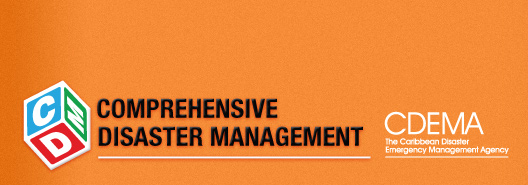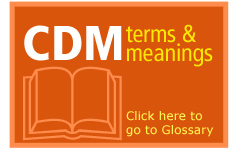|
Definition
A volcano is a mountain or hill with an opening or vent from which gaseous, liquid or solid materials from the inside the earth are ejected. The opening leads downwards to a reservoir of molten rock below the surface of the earth.
The term is also used for mountains, hills, or craters which are made from the build up or removal of materials during past volcanic eruptions even if no active vent presently exists.
What is a Volcanic Eruption?
This is the process where volcanic materials like lava, fragmented rocks or gases are emitted or ejected through a crater, vent or fissure on to the earth's surface to form new deposits.
When pressure from gases building up within the volcano becomes too great, an eruption occurs. Depending on how great the pressure is – eruptions can be quiet or explosive. There may be lava flows, flattened landscapes, poisonous gases, and flying rock and ash.
Where are Volcanoes in the Caribbean?
The Caribbean has several volcanoes distributed all over the Region. Those that been recorded as having erupted are called active volcanoes. The others are called inactive. Presently, the most active is the Soufriere Hills Volcano in Montserrat.
Submarine Volcanoes
Worldwide, there are about five thousand active volcanoes underwater. They are called submarine volcanoes. When they erupt, the lava ejected may cool so rapidly that it shatters into sand and rubble. The biggest concern about submarine volcanoes is that they can cause earthquakes and tsunamis. In the Caribbean we know of the “Kick-em-Jenny” volcano, which is located five miles to the north of Grenada, about 450 feet under water. This volcano has erupted about twelve times between 1939 and 2001, it usually causes water to shoot into the air and onshore, you can hear a deep rumbling sound. The Eastern Caribbean Islands are particularly vulnerable to impact from submarine eruptions.
Issues
Most of the damage caused by volcanic eruptions comes from the materials ejected. Here is a list of such materials and the damage they are known to do.
- Blasted Projectiles: Large projectiles, like rocks, can damage buildings; if these are hot they can start fires. These projectiles are shot high into the air at a great force and then fall very quickly onto the ground, making them dangerous upon impact.
- Mud Flows (lahars): These frequently accompany volcanic eruptions and can be lethal. Lakes can mix with volcanic rock and debris to form a near-solid flow which swallows everything in its path.
- Pyroclastic Flows: This refers to mixtures of hot gases, ash, fine pumice and rocks. The danger lies in the density and temperature of the ash and rock fragments. Fresh volcanic ash, made of pulverized rock, can be acidic, gritty, gassy, and odorous. It’s not immediately dangerous to most adults, the acidic gas and ash can cause lung damage to small infants, to older adults, and to those suffering from respiratory illnesses like asthma. Volcanic ash also can damage machinery, including engines and electrical equipment.
- Gases: These can cause suffocation and are concentrated near the volcano’s vent. There are also respiratory irritants which are carried further away from the vent and are harmful even in small doses.
- Lava Flows: These are flows of extremely hot molten rocks. The thickness and high temperature make these flows very dangerous and they are capable of destroying everything in their path. Since they are usually slow moving, most people can usually get safely away in time, however because of their intense heat, lava flows are great fire hazards.
- Local Earthquakes: These can sometimes follow an eruption and leads to the possible loss of human life and property.
- Tsunamis: Tsunami is Japanese for "tidal wave". This usually comes from the eruption of a submarine volcano, such as Kick ‘em Jenny which is north of Grenada in the Caribbean.
Common injuries experienced during and after volcanic eruptions:
- Pulmonary problems (from the inhalation of ash and gases)
- Eye injuries during ash-removal
A History of Volcanoes in the Caribbean
The Caribbean has many volcanoes and has suffered the consequences of volcanic eruption on several occasions
1. When?
17 July 1995
Where?
The Soufriere Hills Volcano in Montserrat
Aftermath?
The severity of eruptions progressively increased and two years later, the volcano had
made most of the island uninhabitable. It also caused severe disruption to the
economic and social life of the island, resulting in more than half the population
leaving. The remaining population lives mainly on the Northern tip of the island.
Entire reefs have been lost to the eruption and the once lush rainforests of the South have
disappeared and the remaining forests are threatened. Species endangered before the
eruption are now at high risk of extinction. Agriculture was most developed in the south,
which is now unliveable – this has been lost to the volcano and any new agricultural
developments will take place in the north.
Right now, it remains the only active volcano in the Caribbean.
2. When?
8th May 1902
Where?
Mt Pelée, in Martinique
Aftermath?
The pyroclastic flow from the eruption destroyed the town of St Pierre, at that time the
largest city in Martinique, and its 28,000 inhabitants. The pyroclastic flow, made up
of gases, steam and dust, ignited everything flammable in its path. The days before
the eruption, it was noted that there was smoke and steam seen coming from the
volcano, although the authorities did not think to evacuate the city. Only one person, a
prisoner who lived in a poorly ventilated cell, survived.
3. When?
1902
Where?
The Soufriere volcano in St Vincent
Aftermath?
The eruption began on 6th May, 1902, just hours before the eruption in Martinique, and
continued until 30th March, 1903. Of the 1,565 people were killed by the pyroclastic
flows, most were Carib, which destroyed a lot of the Carib culture in St. Vincent and the
Caribbean. There was also extensive damage done to agriculture in the areas around
the volcano.
back to top
|












